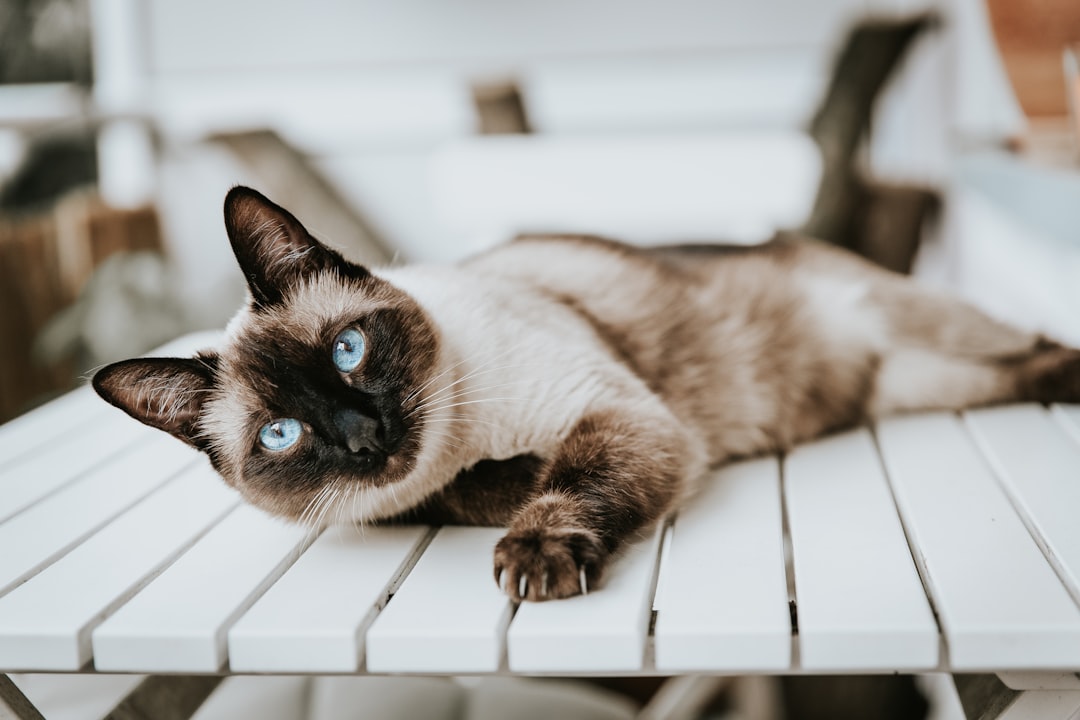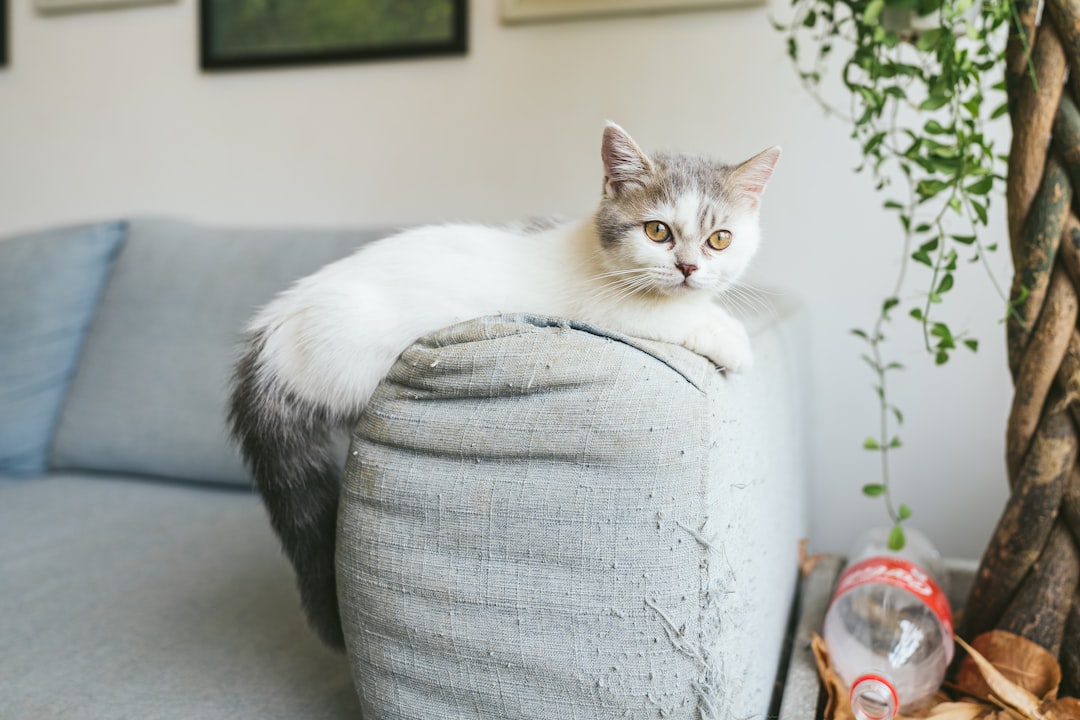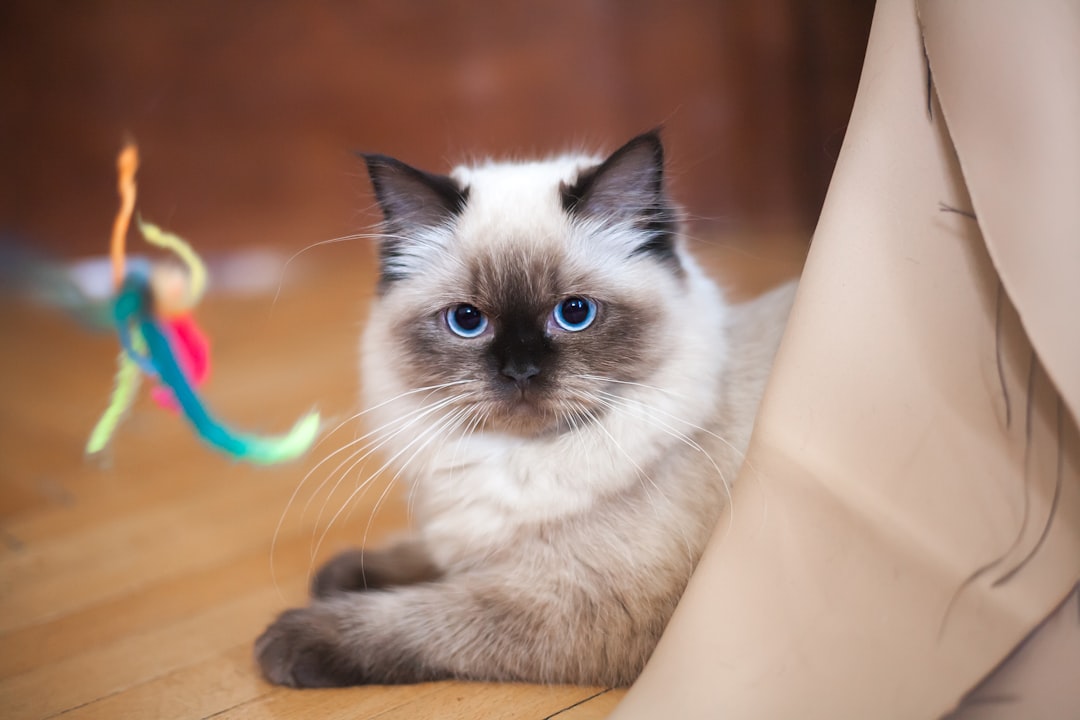As a devoted cat owner, you want the best for your feline friend. However, our purring companions can be experts at hiding discomfort, making it crucial to be vigilant about their health. Recognizing the Signs a cat is sick can mean the difference between a minor issue and a major health concern. Fortunately, by observing subtle changes in their behavior, appetite, and overall demeanor, you can proactively address any potential health problems. In this guide, we will explore the top indicators that your cat may need medical attention, enabling you to ensure that your beloved pet stays happy and healthy.
Changes in Appetite
A cat’s appetite can reveal a lot about its health status. Monitoring these changes closely can help you identify potential issues early on. Here are the primary appetite-related signs to consider:
Increased Hunger
- Unusual craving for food: If your cat seems more eager to eat than usual, it could signal underlying health issues, such as hyperthyroidism or diabetes.
- Frequent begging: Notice if your feline is constantly soliciting food. This behavior could indicate that your cat is not satisfied or is feeling unwell.
Decreased Appetite
- Skipping meals: A sudden loss of interest in food can indicate illness or dental issues. If your cat refuses to eat for more than 24 hours, it’s wise to consult a veterinarian.
- Weight loss: Monitor your cat’s weight regularly. A decrease in appetite often leads to weight loss, which should prompt a veterinary visit to rule out serious health concerns.
Picky Eating Behavior
- Selective eating: If your cat is suddenly choosy about food brands or types, it may be a sign of discomfort, such as dental pain or digestive issues.
- Preference for wet versus dry food: Cats may change their eating preferences as they become ill. Pay attention to any shifts in their favorite food choices as it could signal a problem.
Recognizing these signs a cat is sick related to changes in appetite can prompt prompt action and potentially alleviate more serious health complications.
Weight Fluctuations
Weight fluctuations in cats can signal potential health issues that need prompt attention. Monitoring your cat’s weight is essential for ensuring their overall well-being. Here’s what to look out for:
Rapid Weight Loss
- Sudden Loss: If your cat is losing weight quickly, it could indicate serious health concerns such as diabetes, kidney disease, or hyperthyroidism.
- Diet Changes: Consider whether you’ve introduced new foods or changed their eating schedule. Rapid weight loss may occur if a cat is under stress or has developed a dislike for the new diet.
- Behavioral Signs: Look for concurrent signs like vomiting or lethargy that may accompany weight loss, indicating a need for veterinary assessment.
Unexpected Weight Gain
- Overeating Symptoms: Cats that gain weight unexpectedly may be overeating, often through boredom or lack of physical activity.
- Underlying Health Issues: Conditions such as hypothyroidism or Cushing’s disease can cause significant weight gain. Watch for symptoms like increased thirst and urination.
- Diet Monitoring: Assess their portion sizes and treat intake. Obesity can lead to further complications like diabetes and joint problems.
Weight Stability Concerns
- Stagnant Weight: If your cat’s weight remains unchanged for an extended period, despite changes in appetite or activity level, it may signify underlying health issues.
- Physical Exam: Regular veterinary check-ups can help track weight trends over time and catch potential health problems early.
- Holistic Approach: Ensure your cat’s diet is balanced and they are getting enough exercise to maintain a healthy weight.
Being vigilant about weight fluctuations can help catch potential problems before they escalate. Regularly monitoring your cat’s weight, behaviors, and eating patterns will empower you to provide the best care possible.
Lethargy and Disinterest
When it comes to signs a cat is sick, one of the more concerning indicators is lethargy and a general disinterest in activities. A sudden change in energy levels can often signal an underlying health issue that warrants further investigation.
Reduced Activity Levels
Cats are known for their playful and curious natures. If you notice your feline companion lying around more than usual or showing little interest in their favorite spots or toys, this may be a red flag. Common hallmarks include:
- Spending more time sleeping or lounging
- Avoiding climbing (like scratching posts or cat trees)
- Ignoring opportunities for exploration in the home
Lack of Playfulness
Playtime is essential for a cat’s mental and physical health. If your cat has suddenly lost interest in play, it could indicate discomfort or illness. Consider these points:
- Not engaging with interactive toys or balls
- Ignoring the chance to chase or pounce
- Showing less enthusiasm when prompted to play
Withdrawal from Social Interaction
Cats are social creatures, and changes in their behavior can indicate they are feeling unwell. Watch for signs like:
- Hiding away for extended periods
- Disinterest in socializing or interacting with family members
- Avoiding contact, such as cuddling or lap-sitting
If you observe any of these depressive behaviors, it’s crucial to consult with your veterinarian. Early detection can lead to more effective treatment and a quicker recovery for your furry friend.
Behavioral Changes
When monitoring your cat’s health, signs a cat is sick can often be observed through notable behavioral changes. Any sudden shift in your feline’s typical behavior should be taken seriously, as it may indicate an underlying issue. Here are some key behavioral changes to watch for:
Unusual Aggression
- Increased defensiveness: If your normally gentle cat suddenly becomes aggressive—hissing, swatting, or biting—this could be a reaction to pain or discomfort.
- Territorial behavior: A cat may act aggressively towards other pets or even humans if they feel unwell, as they might be more irritable and less tolerant of disturbances.
Increased Vocalization
- More meows: If your cat starts to meow or yowl more frequently, this can be a sign they are in distress or experiencing discomfort.
- Pacing or restlessness: An increase in vocalization, accompanied by pacing, indicates that your cat may be anxious or in pain.
Changes in Grooming Habits
- Neglecting grooming: Cats are meticulous groomers; if your feline suddenly stops grooming, it might be a sign of illness.
- Over-grooming: Conversely, excessive grooming can indicate stress, pain, or skin problems—look for bald patches or skin irritations.
By observing these behavioral changes, cat owners can become more attuned to their pet’s needs and act proactively, seeking professional veterinary advice when necessary. Remember, signs a cat is sick often begin with alterations in their usual behavior.
Changes in Bathroom Habits
Monitoring your cat’s bathroom habits is crucial in identifying health issues. Abnormalities in urination or defecation can be early signs a cat is sick. Here are several key changes to observe:
Increased Urination
If you notice your cat is urinating more frequently, it could indicate underlying health concerns such as:
- Kidney disease: Cats with compromised kidney function may drink more water, leading to increased urination.
- Diabetes: This condition also results in excessive thirst and urination, often accompanied by other symptoms.
Keep an eye on the litter box; frequent trips can be a red flag that a veterinary visit is necessary.
Straining to Urinate
Pay attention if your cat seems to struggle while trying to urinate. Signs might include:
- Vocalization or crying during urination: This can suggest pain or discomfort.
- Frequent trips to the litter box without producing much urine: This could indicate a urinary blockage—an emergency situation, especially in male cats.
If your cat exhibits these symptoms, seek veterinary assistance immediately.
Changes in Stool Quality
Changes in your cat’s stool can also signal health issues. Look for:
- Diarrhea: Loose stools may result from dietary changes, infections, or intestinal parasites.
- Constipation: Infrequent, hard stools can indicate dehydration or digestive disease.
Monitoring these changes can provide vital insights into your cat’s health. Recognizing these indicators early can lead to timely medical intervention if needed.
Vomiting and Diarrhea
When observing your cat’s health, signs a cat is sick often include gastrointestinal issues such as vomiting and diarrhea. These symptoms can indicate underlying problems that may require immediate veterinary attention.
Frequency of Vomiting
- Occasional Vomiting: Many cats may vomit occasionally due to hairballs or eating too quickly. However, if this happens more than once a week, it’s worth consulting a vet.
- Persistent Vomiting: If your cat vomits multiple times a day, this can be a serious concern, signaling possible infections, intestinal blockages, or ingested toxins.
Consistency of Diarrhea
- Loose Stool: A one-time occurrence of loose stool can result from dietary changes or stress. Keep a close eye on your kitty’s health for any recurring issues.
- Watery Diarrhea: If your cat experiences watery diarrhea, it’s crucial to monitor it. This can lead to significant dehydration and may indicate infections, parasites, or other serious conditions.
Signs of Dehydration
Cat parents should also watch for signs of dehydration, especially when dealing with vomiting and diarrhea. Some indicators include:
- Dry Gums: Check your cat’s gums; they should be moist and pink. If they’re dry, this may indicate dehydration.
- Skin Turgor Test: Gently pinch the skin on the back of your cat’s neck. If it doesn’t return to its normal position quickly, it could be a sign of dehydration.
Always consult a veterinarian if you notice signs a cat is sick, especially if accompanied by vomiting or diarrhea. Early intervention can lead to better outcomes for your feline friend.
Respiratory Issues
When evaluating your cat’s health, signs a cat is sick can include various respiratory issues. These signs often manifest in subtle ways, so it’s important to pay close attention to your feline’s behavior. Recognizing respiratory problems early can significantly improve their chances of recovery. Here are some critical symptoms to look for:
Coughing and Wheezing
- Coughing: If you hear your cat cough regularly, it could indicate an underlying issue, such as asthma or bronchitis.
- Wheezing: This high-pitched sound while breathing can suggest that your cat is struggling to get enough air, possibly due to an obstruction or inflammation in the airways.
Rapid Breathing
- Increased Respiratory Rate: If your cat’s breathing rate exceeds 30 breaths per minute while at rest, this could be a sign of respiratory distress.
- Labored Breathing: Observe if your cat is using its abdominal muscles to breathe. This effort often indicates a more serious problem that warrants immediate veterinary attention.
Nasal Discharge
- Clear or Colored Mucus: A runny nose isn’t just annoying; it may signify a viral or bacterial infection. Pay attention to whether the discharge is clear or opaque, as this can help your vet diagnose the issue.
- Sneezing: Frequent sneezing accompanied by nasal discharge is often an indication of respiratory infections, allergies, or even foreign bodies in the nasal passages.
By monitoring these signs a cat is sick, you can help ensure that your furry friend receives the medical attention they need promptly.
Changes in Coat Condition
The condition of your cat’s coat is an excellent reflection of its overall health. When observing your feline friend, pay close attention to any significant changes in their fur. These alterations can be signs a cat is sick, indicating that your furry companion may need medical attention. Let’s delve into common manifestations under this category:
Dull or Matted Fur
A healthy cat should have a shiny and clean coat. If you notice that your cat’s fur looks dull or has become matted, it could indicate underlying health issues. Common causes include:
- Nutritional Deficiencies: Lack of essential fatty acids or proteins can lead to poor coat health.
- Dehydration: Inadequate water intake often results in a lifeless appearance of the fur.
- Infections or Skin Conditions: Certain infections may cause changes in the fur’s texture and vibrancy.
Excessive Shedding
While occasional shedding is normal, excessive shedding can be alarming. Consider monitoring your cat for:
- Changes in Environment: Stressful situations or new surroundings may lead to increased fur loss.
- Allergies: Food or environmental allergies can trigger excessive shedding.
- Hormonal Disorders: Conditions like hyperthyroidism or Cushing’s disease often manifest as increased hair loss.
Bald Patches or Skin Irritation
Bald patches or noticeable skin irritation warrant immediate attention. These signs might include:
- Fleas or Parasites: Infestations can lead to localized fur loss, usually accompanied by itching.
- Dermatitis: Allergic reactions or skin sensitivities can cause patches of fur to vanish.
- Infections: Fungal infections can lead to circular bald spots, often requiring professional treatment.
In summary, alterations in coat condition can provide vital clues about your cat’s health. Keeping a watchful eye on these signs will help ensure your furry friend remains in peak condition.
Eye and Ear Signs
Detecting signs a cat is sick can often begin with observing your cat’s eyes and ears, which are vital indicators of their overall health. Here are specific signs to watch for:
Red or Watery Eyes
- Discoloration: If your cat’s eyes appear red rather than their usual bright color, it may signal irritation or infection.
- Tearing: Excessive tear production, leading to watery eyes, can indicate allergies, infection, or even injury.
- Swelling: Look for any puffiness around the eyes; this could be a sign of conjunctivitis or other medical issues.
Cloudiness in Eyes
- Vision Problems: A cloudy appearance in your cat’s eyes may suggest the onset of cataracts or other degenerative diseases.
- Increased Sensitivity: If your cat exhibits discomfort in bright light, it could be an indicator of underlying eye issues.
- Behavior Changes: Cats with cloudy eyes may become more withdrawn or may avoid jumping and playing due to vision difficulties.
Ear Infections or Discharge
- Odor or Discharge: Foul-smelling ears or abnormal discharge can point to infections that require immediate veterinary attention.
- Scratching or Shaking: If your cat frequently scratches at their ears or shakes their head, it may indicate irritants like mites or infection.
- Redness and Swelling: Inspecting the inner ear for redness can provide insights; inflammation may suggest an underlying health concern.
Being attentive to these signs a cat is sick can ensure prompt action, enhancing the health and well-being of your furry companion.
General Discomfort
When observing your cat, it’s crucial to be aware of signs indicating signs a cat is sick due to general discomfort. Understanding these subtle hints can help ensure timely veterinary intervention and maintain your feline friend’s health.
Signs of Pain
Cats are notorious for hiding their pain; however, there are noticeable indications that can signal discomfort. Look for:
- Vocalizations: Increased vocalization, such as meowing or growling, may point toward distress.
- Facial Expressions: A grimacing face or squinting eyes can indicate discomfort.
- Sensitivity to Touch: If your cat flinches or pulls away when touched, it might be experiencing pain.
Difficulty in Movement
If your cat is hesitant to move or appears stiff, it could be a sign of injury or arthritis. Watch for these behaviors:
- Reluctance to Jump: Difficulty climbing up to their favorite perch may suggest pain.
- Limping: An obvious limp or favoring one leg is a strong indicator that something is wrong.
- Slow Movements: If your cat moves around less than usual, it could be an indication of discomfort.
Excessive Hiding Behavior
While cats enjoy solitude, excessive hiding can indicate they are not feeling well. Consider these aspects:
- Seeking Darkness: A preference for dark, enclosed spaces might signal that your feline is uncomfortable.
- Reduced Social Interaction: If your cat avoids family activities or appears withdrawn, it could be a sign of underlying health issues.
- Changes in Grooming Habits: Over-grooming or neglecting grooming altogether can also suggest discomfort.
By being mindful of these signs of general discomfort, you can better assess your cat’s health and seek professional advice if needed.
Frequently Asked Questions
What are some common signs that indicate my cat may be sick?
Common signs that your cat may be sick include abnormal changes in behavior, such as increased lethargy, reduced grooming, or withdrawal from social interactions. Additionally, watch for changes in appetite or thirst, frequent vomiting or diarrhea, and any unusual sounds or vocalizations. Also, keep an eye on their litter box habits, as difficulty urinating or changes in urine consistency can signal health issues that require immediate attention.
How do I know if my cat has a fever?
To determine if your cat has a fever, you can take their temperature using a digital thermometer specifically designed for pets. A normal cat temperature ranges from 100.5°F to 102.5°F. If the temperature exceeds 102.5°F, it may indicate a fever, particularly if accompanied by other signs of illness such as lethargy or loss of appetite. Consult your veterinarian for a thorough examination if you suspect your cat has a fever.
What should I do if I see any of the signs of illness in my cat?
If you notice any signs of illness in your cat, such as vomiting, diarrhea, lethargy, or changes in appetite, it’s important to take action promptly. Begin by recording any symptoms you observe, as this information will be helpful for your veterinarian. Schedule an appointment as soon as possible to discuss your observations and get your cat the medical attention they may need. Early intervention can be crucial for the best outcomes.
Can stress cause my cat to become sick?
Yes, stress can indeed have significant effects on a cat’s health. Stressful situations, such as changes in their environment, new visitors, loud noises, or even dietary changes, can lead to gastrointestinal issues, increased aggression, or withdrawal. Additionally, prolonged stress can weaken their immune system, making them more susceptible to infections. It’s essential to identify stressors in your cat’s life and provide a calm, safe environment to help mitigate these effects.
What are some preventive measures to keep my cat healthy?
To maintain your cat’s health, regular veterinary check-ups are paramount. Additionally, provide a balanced and nutritious diet specific to your cat’s age and health needs. Ensure they have access to clean water and encourage regular exercise through play. Maintain a stress-free environment, rich in enrichment activities. Regular grooming helps with their coat and can prevent some health issues, while vaccinations and parasite control are also essential preventive measures.



